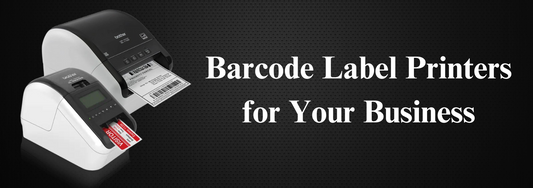Since I have been in the e-commerce industry, I have grown my company with over 45% year over year growth rate in the first five years. I was immersed in my success and ambitious to continue expanding at high speed. But I did not realize the profit was only on the book. In an area I did not pay attention to, small inventory mistakes were eroding our profit. When I realized it, the loss was already over 1 million dollars.
Where Inventory Errors Happen:
Inventory errors can occur at every step of business operation:
-
Did your vendor ship what you ordered accurately?
-
Did the shipping carrier deliver what the vendor shipped to you correctly?
-
Did you fulfill customer orders correctly?
-
Did you check returns and write off the lost values on time?
-
If you use Fulfill by Amazon (FBA), do you track and audit the inventory in Amazon’s warehouse on time?
-
Do you regularly audit your inventory?
If any answer above is No, then inventory inaccuracy may accumulate substantially and eat your profits.
I hereby summarize a lot of important lessons I learned over these years, hoping to help other small business owners avoid similar mistakes.

Lesson 1: Inventory Mana![]() gement Must Be Real-Time, but Accounting Does Not Have To Be
gement Must Be Real-Time, but Accounting Does Not Have To Be
Think about this question: if your inventory management is not real-time, how can you efficiently conduct an inventory audit? If you cannot conduct an inventory audit, how do you know if your inventory is accurate or not? Real-time inventory management is essential for e-commerce and retail industries.
A lot of business owners think if they pursue a real-time inventory management system, they should also pursue a real-time accounting system. However, inventory management and accounting do not need to operate on the same timeframes.
Why Inventory Needs Real-Time Updates
-
Stock Accuracy: Inventory levels must reflect reality instantly to avoid overselling or stockouts. For example, when a unit is sold on your Shopify store, the system should immediately deduct it from available stock.
-
Operational Efficiency: Real-time visibility allows better fulfillment, warehouse management, and purchasing decisions.
-
Customer Experience: If the system lags, customers might buy items that are actually out of stock, leading to cancellations and dissatisfaction.
Why Accounting Does Not Need Real-Time Updates
-
Batch-Friendly Processes: Accounting records such as invoices, reconciliations, and journal entries usually work in periods such as daily, weekly, or monthly.
-
Regulatory and Financial Needs: Accounting is about accurate reporting, not instant reaction. Monthly or quarterly closings are standard practice.
-
System Design: Updating financial ledgers in real time is resource heavy and often unnecessary. It is more efficient to sync in batches.
Lesson 2: Use Industrial-Level, High Quality Automatic Identification and Data Capture (AIDC) Devices
For a very long time, no matter how I requested and trained my warehouse employees, they still scanned the wrong barcodes, leading to inventory mismatch and fulfillment mistakes. Each error cost hundreds or thousands of dollars. Even worse, due to inaccurate fulfillment, customer complaints and bad reviews had negative and long-term impact on my business. Can the warehouse do 100% accurately? It is possible, but only if you make sure the warehouse employees use high quality AIDC devices in every one of their operation steps.
Industrial-grade AIDC devices like Honeywell or Zebra usually deliver speed, accuracy, and durability that consumer-grade tools cannot match. High-quality scanners and printers reduce costly errors, ensure reliable performance under heavy use, and integrate seamlessly with modern platforms such as Shopify, POS, or ERP systems. By improving efficiency, preventing downtime, and supporting business growth, industrial AIDC devices not only cut long-term costs but also enhance customer satisfaction and brand credibility, making them essential for any retailer or e-commerce operation that relies on fast and accurate order fulfillment.
Do not trust employees’ eyes or handwriting. Make sure they scan and the barcode matches during their receiving and fulfillment process. Invest in the right device, develop SOP, and make sure your employees follow all steps.

Want to know what AIDC devices are essential for your operation?
Download Warehouse Essentials e-book here!
Lesson 3: Write Off Returns on Time
Generally speaking, around 16% to 20% of online purchases are returned. Brick-and-mortar retail averages closer to 8% to 10%. The number varies per product category, but if you cannot manage your returns, it is very likely that they can turn your positive profit into negative.
Process to Manage Returns
-
Record all returns into the WMS every month.
-
Record return condition. Example categories: “New,” “Like New,” “Regular,” “Need Write Off.”
-
Export the return report at the end of the month and send it to your accountant.
-
Ensure your accountant writes off the corresponding costs from your book.
-
Set rules. For example, write off 30% of “Like New,” 50% of “Regular,” and 100% of “Need Write Off.”
Talk to your accountant. They will advise you the same way. Make accounting conservative. Do not be fooled by profit before returns are written off.

Lesson 4: Audit Inventories Regularly
Only if your warehouse audits inventory regularly and every time the number matches the number in your inventory management system can you consider the “inventory asset” in your book as solid. Otherwise, your asset is not real.
Best Practices for Auditing
-
Schedule regular cycle counts and full audits.
-
Use barcode scanners or RFID devices for efficient data capture.
-
Reconcile discrepancies promptly through root cause analysis.
-
Train staff and maintain proper segregation of duties.
-
Leverage warehouse management systems with real-time tracking.
Reliable inventory records support smooth operations, accurate financial reporting, and better decision making.











